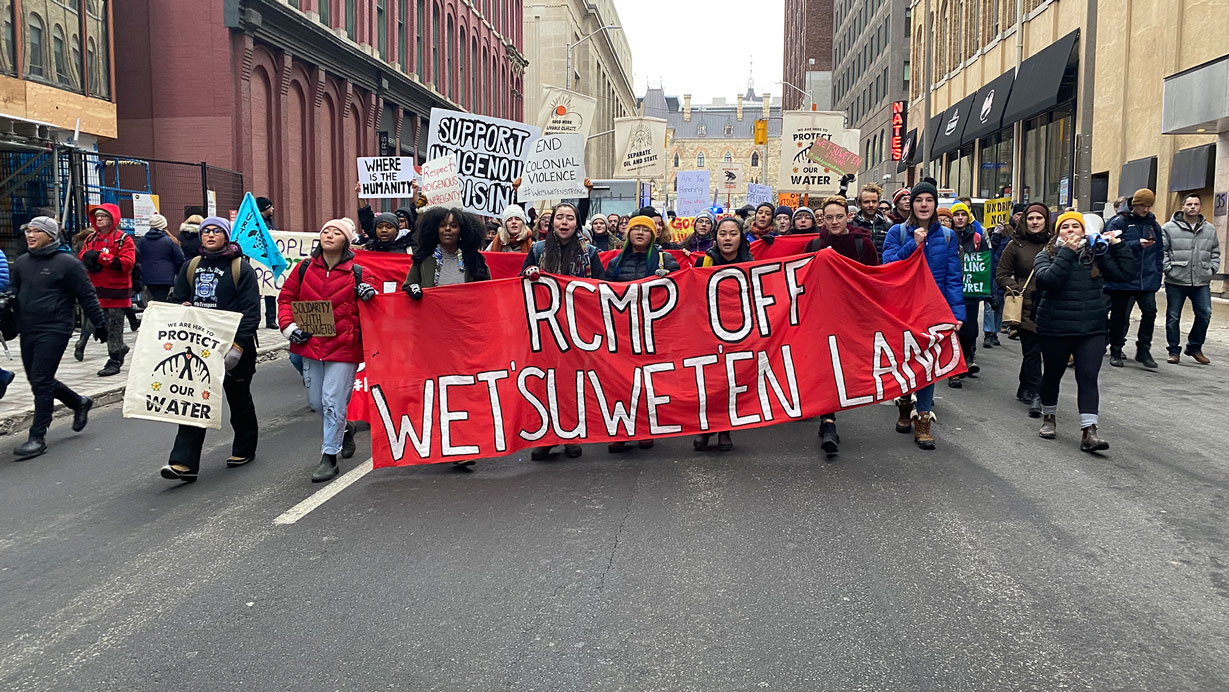After analysing thousands of environmental stand-offs around the world, a group of international researchers report that Indigenous people are more often threatened with arrest, violence, and in some cases death, than others.
In a first of its kind study published in Global Environmental Change, researchers from all over the world looked at more than 2,700 environmental conflicts and found that those protesting injustice often “suffer from high rates of criminalization, physical violence and murder.”
“There’s some sort of violence against those protecting the environment in about one out of every five cases. In eight per cent of cases, there’s an activist killed,” explained Leah Temper, a researcher at McGill University’s school of Natural Resource Sciences who contributed to the study.
“These numbers increase dramatically when Indigenous communities are involved in these conflicts,” Temper added.
Read the study here: Global Environmental Change
Researchers used the information tracked by the Environmental Justice Atlas, or EJ Atlas, an environmental data-tracking website co-directed by Temper.
Through an interactive online map, users can click on multicolored widgets laid out on a world map – each one representing a disputed environmental project.
Using the data on EJ Atlas, researchers found one quarter of the Indigenous-led demonstrations resulted in violence, according to study data.
Nearly a fifth of the Indigenous-led demonstrations documented in the Atlas resulted in murder, “a figure which is significantly deadlier than other categories and the global average,” according to the final report.
The data shows environmental defenders are “frequently members of vulnerable groups who mainly employ non-violent forms of protest,” and that their grassroots initiatives have weight in overall discussions about sustainability.
“People rise up to say ‘we don’t want to be polluted,’ and the violence that is pushed against them is greater also because they are racialized,” Temper explained.
Despite the threat of violence, Temper says in 11 per cent of cases globally, protestors successfully halted – or postponed – large, exploitative industry projects.
One story that stands out to Temper involves a British-owned mining company and a group of forest-dwellers in India.
When Vedanta announced it would begin extracting bauxite from the Niyamgiri Mountain, the Dongria Kondh tribe and their allies spoke out about the mountain’s significance in their culture.
“[The mountain] was the resting place of their God,” Temper explained. “The mining company was, in a sense, planning to behead the mountain – behead their God.”
The case made its way to India’s Supreme Court, and the project was halted. New legislation was introduced to protect the interests of Indigenous people who live off the land.
It’s an encouraging indication that other cases yet to be brought before a judge might have a favourable outcome.
“It shows, first of all, that you can win against these multi-billion dollar projects, and that there is the potential to recognize the cultural values of communities that are saying ‘this land is sacred’ for us, and we have the right to decide what happens on our territory,” she says.

At times, the scope of the exploitation can be overwhelming. But Temper says it’s not all bad news.
“We see that communities that are being polluted, communities that are being dispossessed, communities that are being pushed off their land are standing up and saying ‘we refuse to be polluted,” she says.
Many eyes are now on Canada, where more than half of the world’s mining companies are based.
Temper says the track record of their human rights abuses is hard to ignore.
“Up until recently there was really no accountability for the actions Canadian mining companies would take abroad,” she explained. “This often involves being complicit with governments who are using corruption, violence, paramilitary forces for forced evictions of communities to get them out of the way [and] clear the ground for some of these mining projects.”
“The [Federal] government has not really, so far, taken any meaningful action on this,” Temper added.










